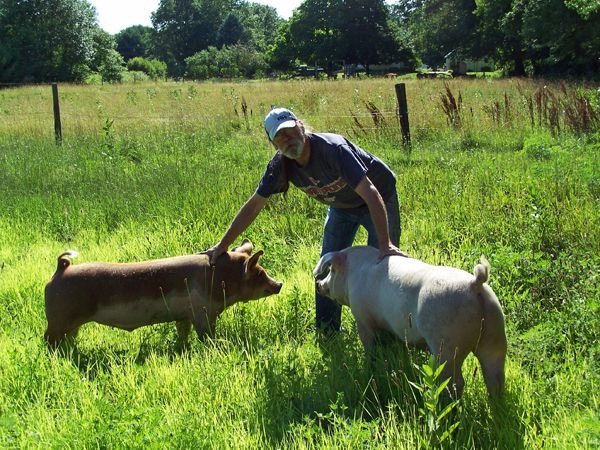
Pigs were the last animal we added, in 2010. We’d been following Walter Jeffries’ Sugar Mountain blog for a few years. We bought our first piglets from him.
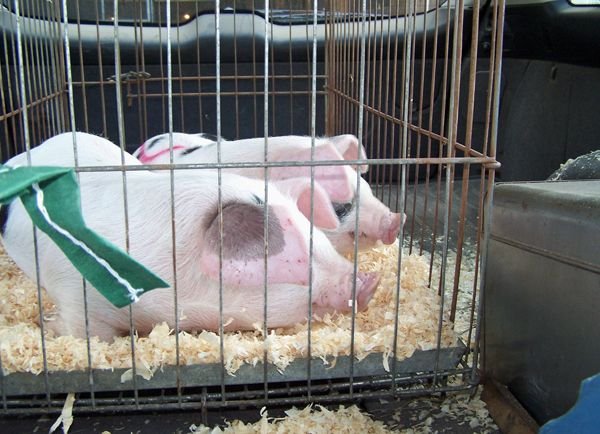
We have a large dog cage. We use this for transporting them. We put sawdust in it and it fits in the back of our Subaru wagon. If the pigs are close to 8 weeks old, they fit just fine.
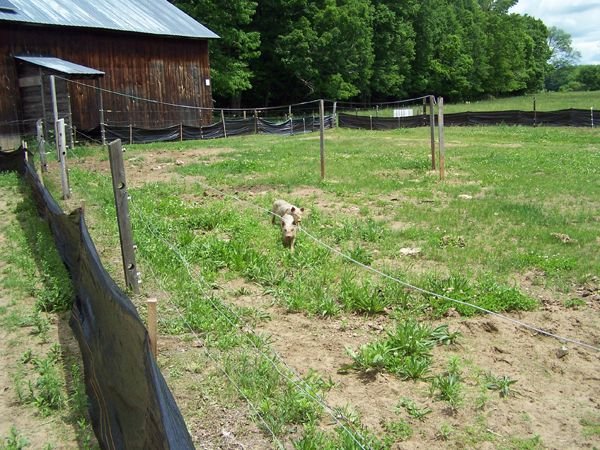
First and foremost, Walter Jefferies wrote of good fencing and visual barriers. The piglets would not have their mom to teach them where the electric fence was. If they ran through it, they sure would not be coming back through. And we are far too old to be chasing piglets.
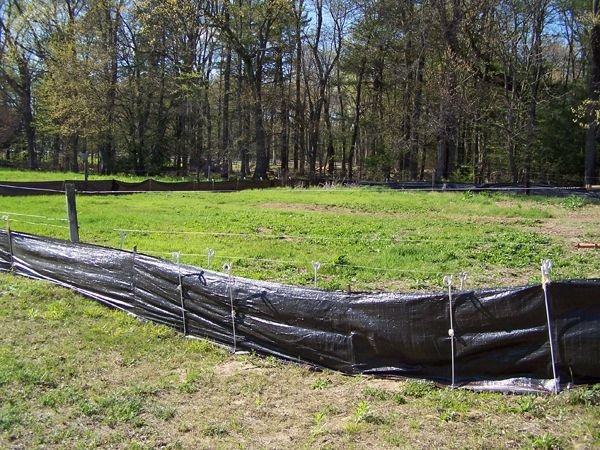
We had a good source (free) of the black plastic barrier used along construction zones. We figured out how to run it on the outside of the electric fence to provide the physical barrier.
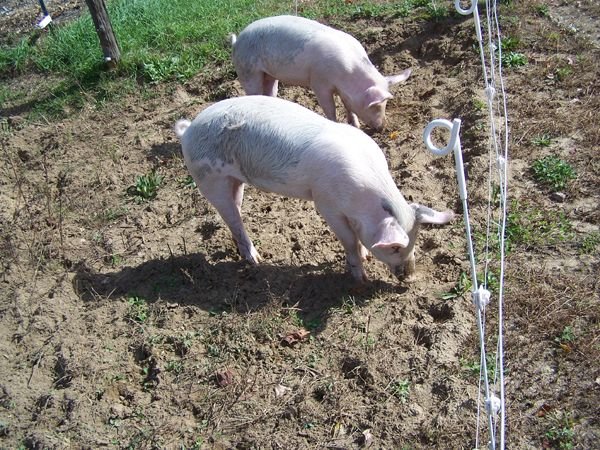
Once it was up we double checked the electric fence, making sure the wire was at nose height and not shorting out anywhere. It was on a dedicated charger, so it was plenty hot.
We use a LOT of these white pigtail posts all over the farm. For the pigs they hold the wire down to nose level, and anchor the black plastic so there’s no light under it.
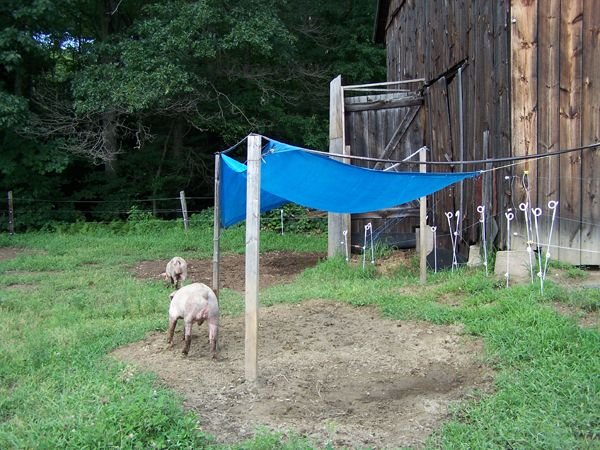
Next we get out the tarp, drip tape, and (3) 2” x 4” and make the piggy dripper. Pigs can’t sweat, so they need mud or water to cool down if the temps climb above 75F. We have no running water here, so we make a piggy dripper. The 2” x 4” get the tarp and hose up out of pig reach. The tarp prevents sunburn when they are in the dripper. The drip hose is set to drip very slowly, just enough to make a muddy area.
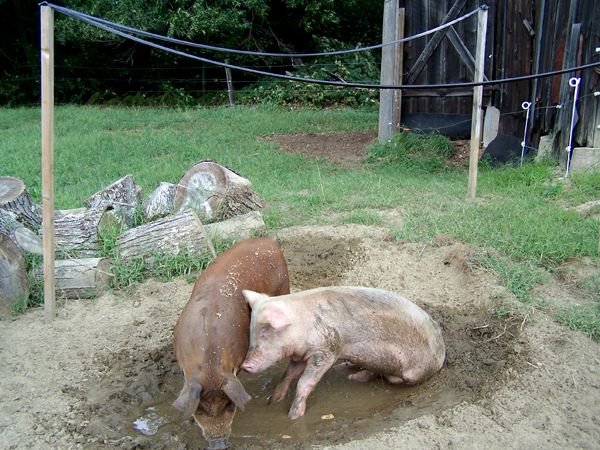
You can see it is well used.
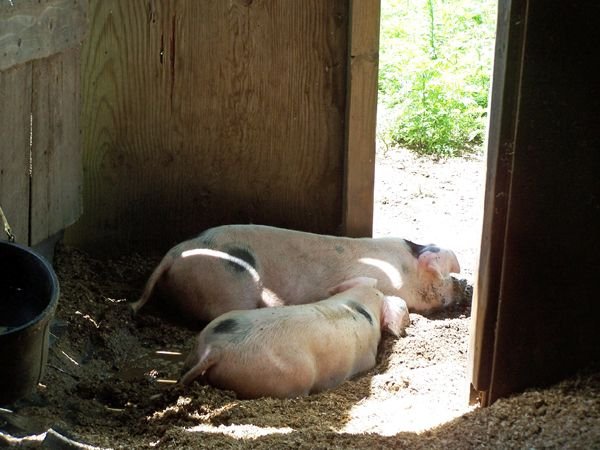
Their water bucket is just inside the door. We dump it so it runs into the shaded area and they like to lay there when the sun isn’t on it. It’s not some place we can make a mud hole in, so hence the piggy dripper.
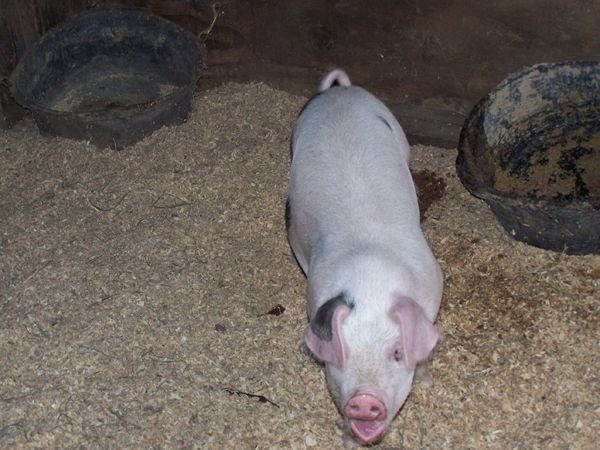
Next we put up 2 feed buckets, spread way apart. That way one pig can’t hog all the food. (The one on the right in this photo is for extras, like whey from cheesemaking or garden stuff.) The buckets are Fortex feed tubs and we hang then with brass double end snaps. They are strong enough to hold 2 piglets….
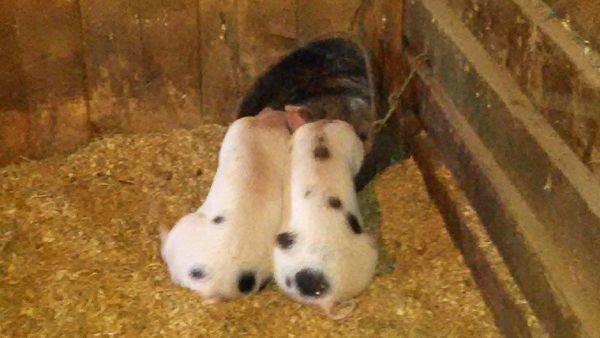
How to save energy while eating…
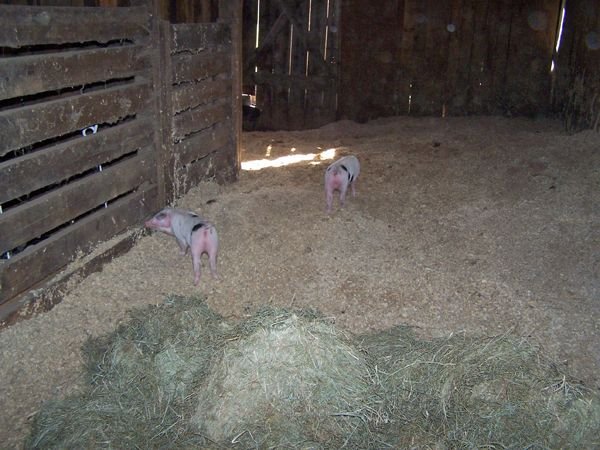
Their inside area is good sized, 35’ x 15’. It’s where they compost the bedding from the chickens and cows (when we have them). We keep the piglets locked inside for the first day or 2, until they are settled in and learned we have food.
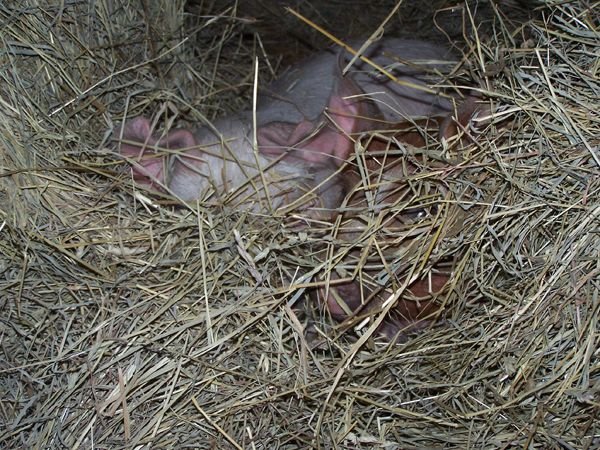
Next we get a bale of hay and make a big hay pile for them to sleep in. We get them mid May and we still have weeks of freezing nights until June.
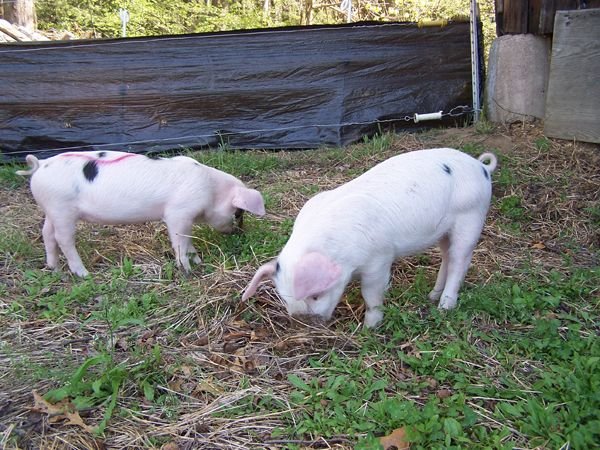
Then we let them out into their area. They seldom get farther than just outside the door, as all the acorns from the previous year are there. (Pigs go to Freezer Camp in early October.)
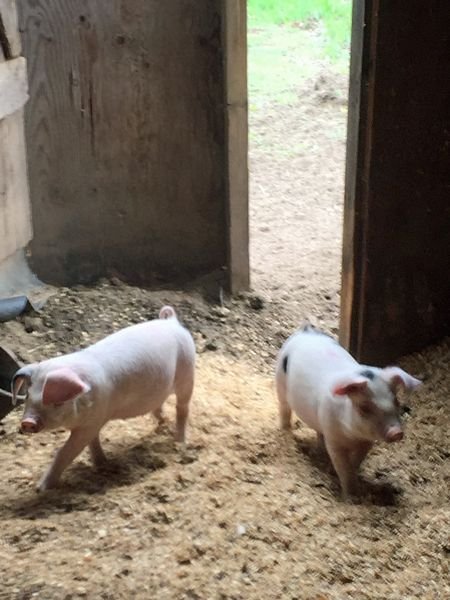
Coming in from exploring…
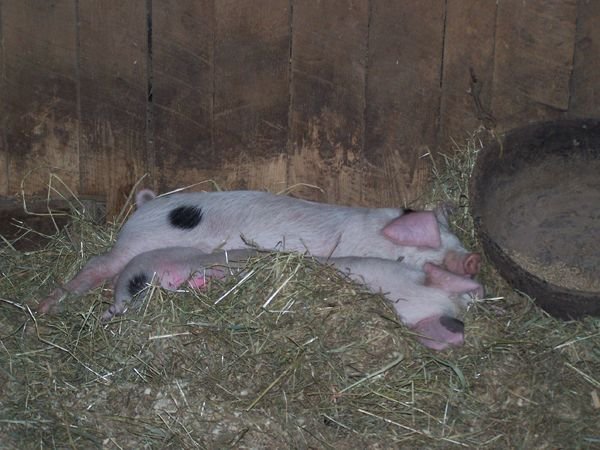
Doing what piggies do 2nd best….
With the proper attention to infrastructure, we find the pigs the easiest to care for. They don’t need moved like cows, as they have a ¼ acre turnout, plenty big enough for 2 pigs. They don’t have to be let in and out morning and night like chickens. Just fed twice a day and given tummy scratches and they are happy campers.
References:

Community Forums
